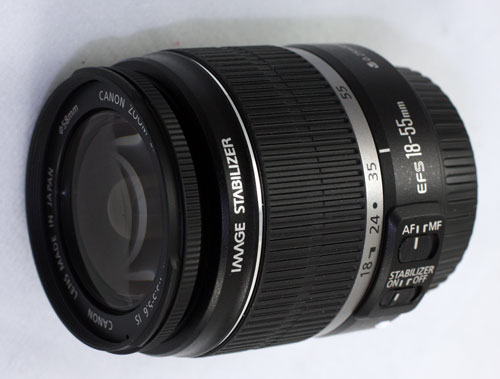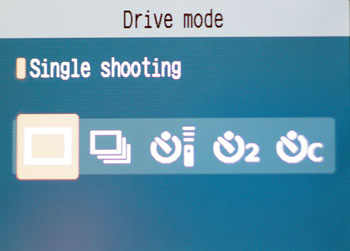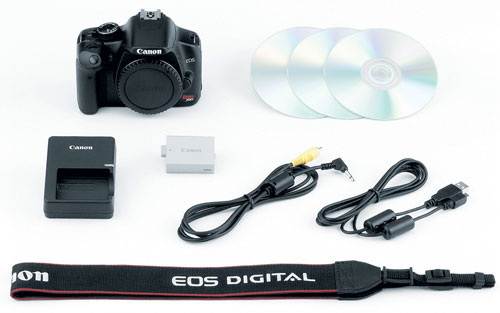Canon XSi: 12.2 Megapixels, Image Stabilized Lens, and Double Live View
by Wesley Fink on May 5, 2008 3:00 AM EST- Posted in
- Digital Camera
XSi Features (cont'd)

The first Canon 18-55mm lens was introduced with the 6MP Digital Rebel. At the time that lens was heralded as superb quality for a kit lens. The Digital Rebel is now in its fourth generation and resolution is doubled to 12.2MP. What was a great 6MP lens had become a not so wonderful 10MP lens on the XTi and it was time for an update with the move to 12MP.
Canon obliged with several minor changes to the 18-55mm layout and the addition of an aspherical element for one of the lenses. Canon has also developed a new simpler and lower-cost Image Stabilization system that is incorporated in the revised lens. While Optical Image Stabilization is built into lenses and only works with that IS lens it does offer the advantage of showing in the viewfinder, or on the Live View Screen, the true impact of the IS operation.
Mechanical Image Stabilization used by Sony, Pentax, and Olympus works with every lens you mount but you cannot see the effect through the viewfinder. However, recent implementations of Live View by these manufacturers allow the user in some cases to see the true effect of IS on Live View. Those are discussions for another article, but for now Canon, Nikon, and Panasonic have embraced Optical Image Stabilization.
Early testing shows the new 18-55mm IS to be a superb lens with performance comparable to top-line Canon lenses. Including an IS kit lens comes just in time as Sony, Pentax, and Olympus have all adopted mechanical IS built into the body in their entry cameras. Nikon is also offering an optical IS kit lens in their new D60.
Canon claims up to 4 stops of improved hand-holding with the new IS kit lens. We did find we could improve 2 to 3 stops in most situations, but the 4-stop advantage likely requires ideal conditions.
The most remarkable feature of the new IS lens, apart from quality images, is the price. Canon is including the 18-55mm IS for a premium of just $100 over the price of the body. Considering the real advantages of an optical IS lens it is definitely worth choosing the kit with the IS lens as it is $100 that is very well spent for the value received.
PC Remote Control
The prosumer 40D EOS utility software allows the user to remotely control the camera with your computer over a USB connection. This includes the option to record images directly to your hard disk. It was frankly a shock to see this same very Pro-oriented feature available now for the XSi. The utility now works on both the 40D and XSi and allows you to preprogram your PC or Mac for long exposures or for time-lapse photography. You can even focus and preview shots on the monitor in Live View mode.

The EOS Integrated Cleaning System, first introduced on the Canon XTi, has been a feature of every Canon camera introduced since then. The system, which vibrates the sensor to shake off dust, is continued unchanged in the XSi.

Auto Lighting Optimization is a new option on the XSi. This feature was introduced on the 40D. Canon claims the Auto Lighting Optimizer improves dynamic range and it is on by default. Therefore you can see the impact of ALO in our test images.

Those who prefer can turn off ALO in Custom Function 6. A related Custom Function 5 allows the user to enable/disable Highlight Tone Priority. This expands dynamic range from 18% grey to bright highlights. The downside is noise may increase in shadow areas. Both these dynamic range expansion features are brought over from the 40D. They work in PASM or A-DEP modes for JPEGs, but have no effect on images captured in RAW format.

Continuous shooting is up to 3.5FPS, a slight increase from the 3FPS of the XTi despite the 20% increase in sensor resolution and image size. This makes the XSi one of the fastest entry DSLRs available in continuous mode. From the 40D the XSi also adds a 2 second timer mode (with optional mirror lockup) which is convenient for tripod shooting. The self-timer C option in the LCD screen shot above counts down from 10 seconds, but then takes a user selectable one to ten shots in succession to keep you from having to go back to the camera for second or third attempts.

The Rebel XSi is packaged in a big red splashy box for the US market. In Europe, where it is called the 450D, the packaging is a much more subtle Canon grey and black.

In the box you will find the rechargeable battery, charger, USB cable, video cable, Canon neck strap, software CDs, manuals, and warranty card(s). The most common kit with a lens includes the new 18-55mm f/3.5-5.6 IS (optical Image Stabilized) lens.










56 Comments
View All Comments
AtaStrumf - Monday, May 5, 2008 - link
The last table I believe is a comparison of the XSi and the Sony A350 not:ISO Comparison - Canon XSi vs. Nikon D60
As the name of the table suggests.
Wesley Fink - Monday, May 5, 2008 - link
The table has been corrected.viqarqadir2 - Monday, May 5, 2008 - link
The first digital rebel had a 5.3 (5.1 effective) CMOS sensor and not the 6.3 you mentioned.Roy2001 - Monday, May 5, 2008 - link
Do you have a Rebel? Stop misleading!viqarqadir2 - Tuesday, May 6, 2008 - link
Yes I do have a digital rebel. Its been put away for a while now so I seem to have forgotten the pixel count on it. It does indeed have a 6.5 Mp sensor. I dont know how I got it into my mind that it has a 5.3 MP sensor but I have believed that for years now :)Sorry about the mistake
Wesley Fink - Monday, May 5, 2008 - link
According to Canon the original Digital Rebel had 6.3 effective megapixels (6.5 total megapixels) as detailed in our tables. These specifications are still available on their website.